Today’s Science section in the New York Times has an interesting article: “Mind Games: Sometimes a White Coat Isnt Just a White Coat.” It is about experiments that were done studying a phenomenon they call ‘enclothed cognition’ which says that the clothing we wear affects our cognitive processes. They took a random sample of folks and gave them a cognitive test to determine attention and IQ, then told them to put on a white coat they said was a ‘doctor’s coat’ and retested them. They scored significantly higher when wearing what they thought was a doctor’s coat! Then they took another random sample and did the same thing, only this time they said it was a housepainter’s coat. Now, when wearing a housepainter’s coat, their scores went down. Mind you, it says in the article it was the same coat, so really, it isnt the clothing that is affecting cognitive performance, but what the coat was called. It is the verbal, conceptual ‘apparel’ that is running the show.
It is the week of Passover and also it is Easter week so it is a time one thinks about the stories of the Judeo-Christian tradition. Probably my favorite story of the Old Testament is from Exodus, where we find Moses wandering in the hills being a shepherd. (How he came to be there is an amazing yarn, too). Anyway, as we all know, he happened to notice a bush that was burning and it didnt “consume itself” – it didnt burn out. I was thinking that he probably saw quite a few brush fires in that dry country, but not the kind that burn all day in one place…so he goes over to investigate. Then the weirdest thing happens – the bush starts talking to him! And the first thing it says is “Take off your shoes. This is holy ground.”
Shoes are very symbolic to us. More than any other article of clothing, they take on our personal shape and configuration. To walk a mile in someone else’s shoes is to see things from their unique perspective. And to enter the inner sanctum of temples throughout the Near and Far East it is required that we remove our shoes. My Guru used to say about that practice, “Leave your ego with your shoes!” meaning that taking off the shoes means leaving your prejudices, concepts and partial, ordinary understanding behind. Taking off the shoes means being open to a new perspective. That openness is a requirement of spiritual, cognitive expansion. The word “understanding” itself implies what stands under us, our feet and what covers them. Moses is asked to take off his shoes as a form of humility and also, because he is about to have his mind blown. The ordinary is about to become extraordinary.
After Moses takes off his shoes and approaches the bush, it instructs him to go to Pharaoh and tell him to let the Israelites go. Shocked, the first thing Moses says is “Who am I?” meaning, his self-concept is miles away from having the confidence to demand liberation. After all, he is just a shepherd; in a sense he is wearing a ‘shepherds coat’. So he proceeds to have a long argument with the bush as to his unsuitability for the task, finally asking, “Cant you send someone else?” which really pisses the bush off. At that moment, the ego is fighting fiercely for its limitations, it is so much more comfortable in bondage. The ego is like that.
Yoga is the process of divesting ourselves – “getting rid of what we havent got” as my Guru, Swami Muktananda put it. We are having an encounter with our naked Being, which is free, eternal, all -pervasive. We are going to move our focal point from the physical body, to the pranic body, to the purest Self, going form the finite to the infinite. It is a stripping away. We use all sorts of maneuvers in this process, including and especially the repetition of the mantra my Guru gave me: Ham Sah, which means “I am That.” Not coincidentally, that is the Name the burning bush gives Moses when he asks “who shall I say sent me?” The Bush says, “ok, I will tell you my name and this is my name forever: I AM.” I AM consciousness is the Self without any limiting cognitive clothing. Ham Sah. Repeat Ham (sounds like ‘hum’) on the inhalation and Sah on the exhalation. That is your true identity, as naked and Nothing as it is… We will weave that awareness into a fabric that befits our true nature. Hatha Yoga weaves this awareness into our cells.
Speaking of weaving, this reminds me of a striking detail of the crucifixion story from the gospel of John. It seems John was the only disciple to eyewitness to the crucifixion – the rest had taken a powder. John says that the Roman soldiers who did the work were allowed to divide up Christ’s clothing among themselves. But there was one robe that was a seamless robe, “woven in one piece from top to bottom.” So they cast lots – threw dice – for it, it was that special. A seamless robe is the cognitive equivalent of the awareness of unity that is the state of Realization, also called Samadhi. As it says in the gnostic gospel of Thomas, we enter the kingdom when we realize the “inner is as the outer, the above is as the below..” Knowing that what is within us is of the same substance as what we see outside of ourselves, one Thing, a continuum, is wearing a seamless robe. This knowledge is possible through love.
As we have said before, Hatha Yoga is a Tantric methodology, and the word Tantra means loom. Doing asana and pranayama is a kind of weaving, and today we are weaving our Easter and Passover finest, seamless robes of the substance of love. We will breathe with love, loving the prana, each breath embroidering love into the fabric of our existence. Shall we remove our conceptual garments and be naked in the fabric of love?
As Wm Butler Yeats wrote of this process:
A COAT
I MADE my song a coat
Covered with embroideries
Out of old mythologies
From heel to throat;
But the fools caught it,
Wore it in the world’s eyes
As though they’d wrought it.
Song, let them take it,
For there’s more enterprise
In walking naked.
Happy Passover, Happy Easter!
April 3, 2012

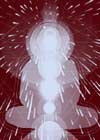

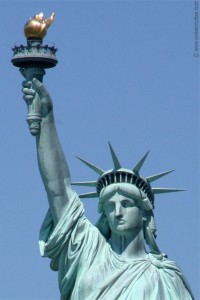
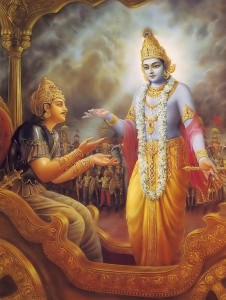


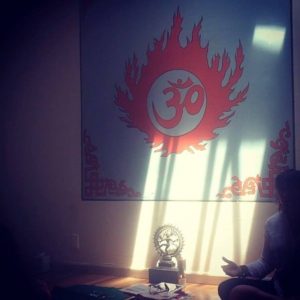

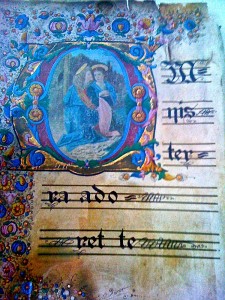
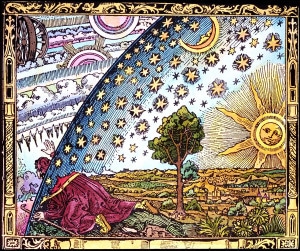
Leave a Reply